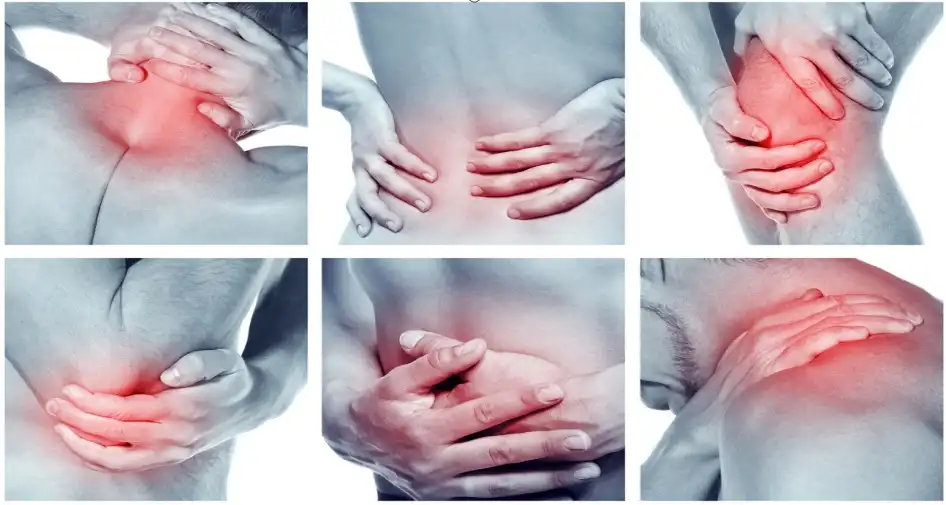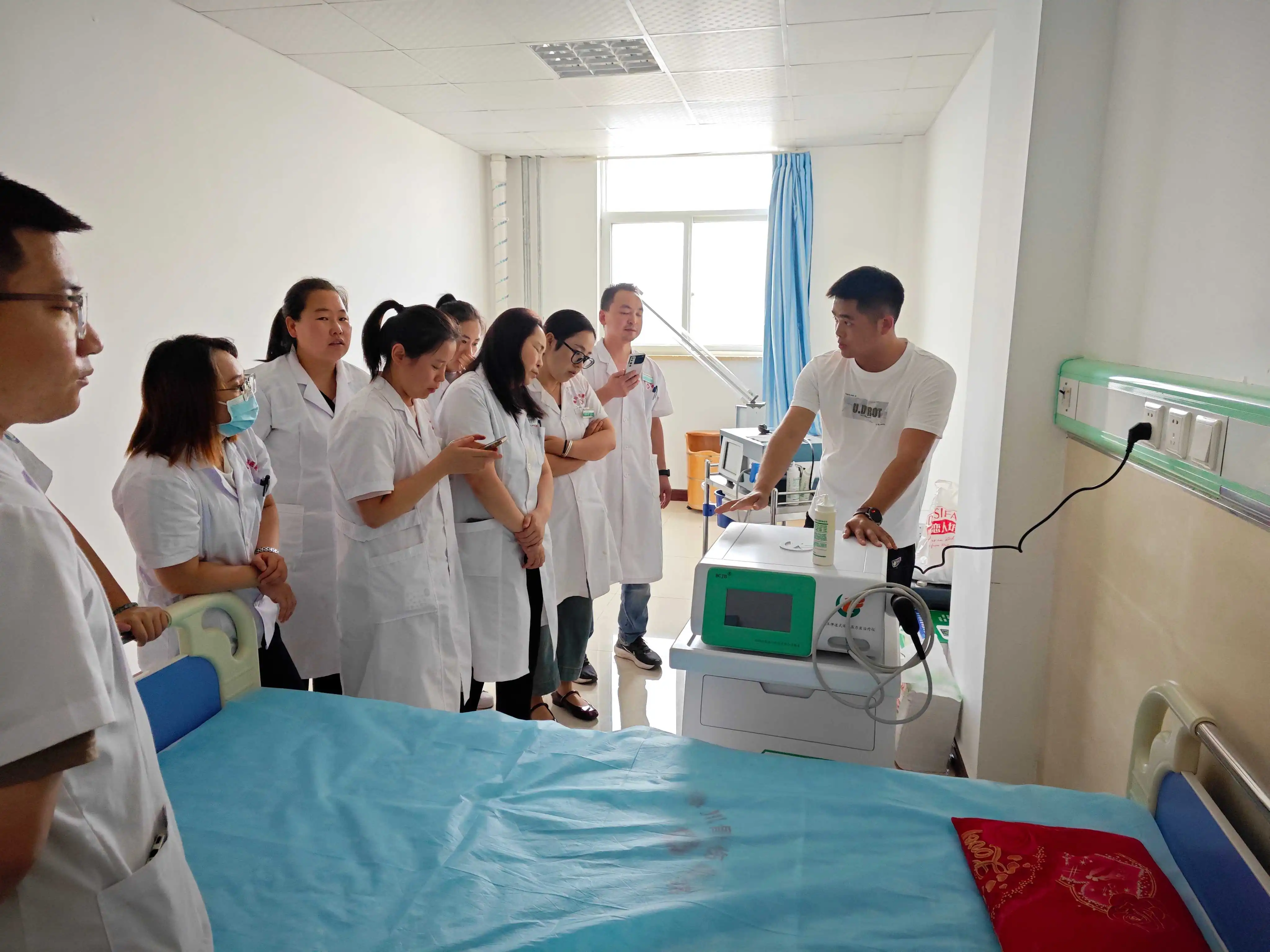Scar tissue can be a persistent issue, affecting both the appearance and functionality of the body. Whether it's the result of an injury, surgery, or a medical condition, scar tissue can cause discomfort, limit movement, and in some cases, lead to further health problems. In recent years, shockwave therapy, often delivered by portable shock wave equipment, has emerged as a potential solution for addressing scar tissue. But the question remains: Does shockwave therapy truly break up scar tissue?

Understanding Scar Tissue
Before delving into the effects of shockwave therapy, it's crucial to understand what scar tissue is. Scar tissue is a type of fibrous tissue that replaces normal tissue during the wound - healing process. When the body is injured, fibroblasts, a type of cell, produce collagen to repair the damaged area. Over time, this collagen forms a dense, fibrous mass known as scar tissue. In some cases, excessive scar tissue formation, such as keloids or adhesions, can cause problems. Keloids are raised, thick scars that extend beyond the original wound area, while adhesions are bands of scar tissue that form between internal organs or tissues, potentially causing pain and restricted movement.
How Shockwave Therapy Works
Shockwave therapy, especially when administered using portable shock wave equipment, involves the use of high - energy sound waves. These shockwaves are generated by the device and then directed towards the target area. The shockwaves travel through the body's tissues, creating a series of mechanical effects. When the shockwaves encounter the scar tissue, they create micro - traumas. These micro - traumas are small, controlled injuries that stimulate the body's natural healing response.
The body responds to these micro - traumas by increasing blood flow to the area. This increased blood flow brings in essential nutrients, oxygen, and immune cells, which are crucial for tissue repair. Additionally, the shockwaves can break down the disorganized collagen fibers in the scar tissue. By disrupting the structure of the scar tissue, the shockwaves help to remodel the collagen, making it more aligned and similar to normal tissue. This process can lead to a reduction in the size and hardness of the scar tissue, as well as an improvement in the flexibility and functionality of the affected area.
The Role of Portable Shock Wave Equipment
portable shock wave equipment has made shockwave therapy more accessible. These devices are designed to be lightweight, easy to use, and can be used in various settings, including clinics, physical therapy offices, and even at home under the guidance of a healthcare professional. One of the key advantages of portable shock wave equipment is its versatility. It can be adjusted to deliver shockwaves at different intensities and frequencies, depending on the patient's condition and the type of scar tissue being treated.
For example, in the case of a small, superficial scar, a lower - intensity shockwave setting may be sufficient. The portable device can precisely target the scar area, delivering a gentle but effective treatment. On the other hand, for a more extensive or deep - seated scar, a higher - intensity setting can be used. The portability of the equipment also allows for easy treatment of hard - to - reach areas, such as scars on the back or joints.
Clinical Evidence and Case Studies
Numerous clinical studies have explored the effectiveness of shockwave therapy in breaking up scar tissue. A study conducted on patients with post - surgical adhesions found that shockwave therapy, administered using a combination of stationary and portable shock wave equipment, led to a significant reduction in adhesion - related pain and an improvement in joint mobility. The shockwaves were able to break down the fibrous bands of scar tissue, allowing the affected organs and tissues to move more freely.
In another case study, patients with keloid scars were treated with shockwave therapy. After a series of treatment sessions using portable shock wave equipment, there was a noticeable decrease in the size and elevation of the keloids. The patients also reported a reduction in itching and discomfort associated with the keloids. These studies, along with many others, provide evidence that shockwave therapy can indeed be an effective treatment for scar tissue.
Comparison with Other Scar - Treatment Methods
When considering treatment options for scar tissue, it's important to compare shockwave therapy with other methods. Traditional methods for treating scar tissue include topical creams, corticosteroid injections, and surgical excision. Topical creams may help to improve the appearance of scars to some extent, but they are often limited in their ability to break down the underlying scar tissue. Corticosteroid injections can reduce inflammation and soften the scar tissue, but they may have side effects, especially with long - term use. Surgical excision, while effective in some cases, is invasive and carries the risk of further scarring.
Shockwave therapy, especially when using portable shock wave equipment, offers several advantages over these traditional methods. It is non - invasive, which means there is no risk of infection or further scarring associated with surgery. It can be targeted precisely to the scar area, minimizing the impact on surrounding healthy tissues. Additionally, shockwave therapy can stimulate the body's natural healing processes, leading to long - term improvements in scar tissue.
Potential Limitations and Considerations
While shockwave therapy shows great promise in treating scar tissue, it is not without its limitations. The effectiveness of shockwave therapy can vary depending on the type and age of the scar tissue. Older, more established scar tissue may be more difficult to break down, and multiple treatment sessions may be required. Additionally, the use of portable shock wave equipment requires proper training and expertise. Incorrect use of the device can lead to ineffective treatment or even cause harm to the patient.
It's also important to note that shockwave therapy may not be suitable for all patients. Patients with certain medical conditions, such as bleeding disorders, pacemakers, or pregnancy, may need to avoid shockwave therapy. Therefore, it's essential for patients to consult with a qualified healthcare provider before undergoing shockwave therapy for scar tissue treatment.

Shaanxi Miaokang Medical Technology Co., Ltd had R&d and produce portable shock wave equipment
is a comprehensive integrator engaged in medical instrument research and development, sales, medical technology research and promotion, and investment in medical institutions. The main research and development of medical ozone therapy equipment, extracorporeal shock wave therapy equipment and other products.
If you had any questions,feel free to contact us:Cathy@miaokang.ltd
Conclusion
In conclusion, shockwave therapy, especially when delivered by portable shock wave equipment, has the potential to break up scar tissue. Through a combination of mechanical effects and stimulation of the body's natural healing response, shockwave therapy can remodel and reduce the size of scar tissue, improving both the appearance and functionality of the affected area. While there are potential limitations and considerations, the growing body of clinical evidence and the advantages over traditional treatment methods make shockwave therapy a promising option for those dealing with scar tissue. As technology continues to advance, portable shock wave equipment is likely to become even more effective and accessible, further enhancing the treatment of scar tissue. If you are considering shockwave therapy for scar tissue, it's crucial to have a detailed discussion with your healthcare provider to determine if it's the right option for you.






